5 tips for using SEO analysis tools
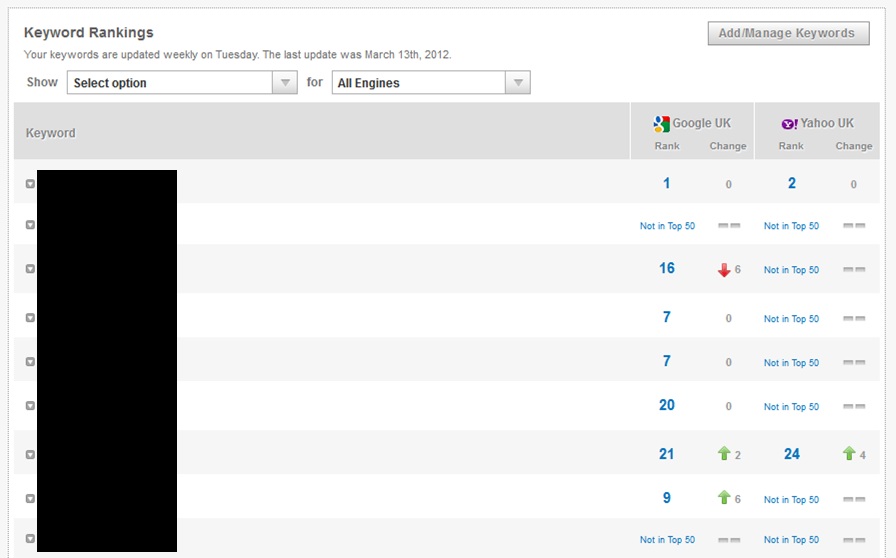
We use a number of different tools when it comes to measuring the SEO performance of the sites that we work on. Of course in the end the most important thing is the one that tells you how much revenue they have made through search engines, but that can always be broken down further (brand/non-brand, search engines, keywords, etc). What I’ve been looking at are some tools that give you insight as to how your site is performing on the web without looking at that inside the site data. I’ve been looking at SEOmoz and Linkdex.
Before we get there though, here are some starter posts I’ve written in the past: some SEO basics (looking at mostly technical stuff); General measuring of your SEO efforts (some tips on what to measure to see how successful what you’ve been doing is) Building and measuring keyword footprints (looking at what phrases you want to rank for and then measuring performance); and finally how you can use Hitwise to help you decide on your search strategy.
SEOmoz and Linkdex are tools that do similar things in similar ways. This post isn’t an attempt to tell you which one to use – that will depend on your situation (although this post might highlight some of the features that you want to use and help you decide).
1. Ranking Positions
The number one thing people want to use SEOmoz and Linkdex for is ranking positions for phrases for key websites. Both SEOmoz and Linkdex do this:
You can use this information to show how well the site is performing against a given set of keywords (for a given set of pages). If you download this often enough (or you use the on page tools) you’ll be able to tell if you are changing your rank for keywords which you are aiming to change.
I think this is the main use we have out of these reports on a regular basis. It actually fits very well into the post I wrote about keyword footprints, because you can put your keywords into these reports and monitor them.
Of course the number two thing that you can do with these reports is that you can use them to monitor your competitors. You can find out where they rank and whether they are going up and down.
That’s not to say that you should ignore the data that comes out of your analytics system (remember that you’ll be able to get a better handle on long tail keywords using that), you should still use that information in conjunction with this data.
2. Link Analysis
The most important thing when it comes to SEO is how many related websites link to you with good anchor text. You can rank well without bothering to do any of the technical stuff if you get good links. Obviously you’ll be ranking better if you do all the technical stuff, but you need links.
Not just any links of course, you need quality links and really you want them to be recent, from website with good authority and related to the subject matter of your site.
What we get from the tools is a ranked version of the links on the site based on a rather arbitrary ranking system that each of the tool devises themselves.
This is a useful way of telling what is important to the site, but it probably won’t help too much with your link building effort on its own. You may be able to ask organisations to change the anchor text to your pages, but only if you have a good relationship with them.
What you can do though is do a sneaky tactic of seeing what pages your competitors get links from. And then copy them! Seriously though this may give you some ideas where you haven’t previously thought of getting links.
3.On Page Keyword Analysis
When you want to find out how well you are doing with your on page ranking for a particular keyword, what better way to do it than run a report out of your tool.
The SEOmoz version gives you all the information that you want about a particular keyword on a page regarding how often it is on the pages, where it is, how it has been optimised (or over optimised). The linkdex version gives a similar view, but probably a bit less in detail (you can see one in tip 5 below).
Remember that you might want a page to be optimised for more than one keyword, so you need to think about what your optimum keyword and how you make sure that you have that being the most prominent, with the others being arranged around it.
4. Get Crawl Errors
You’ll never be able to replace your Google Webmaster tools with a report like this, but you might be able to find some interesting facts out about your site. It’s where SEOmoz has an advantage over linkdex (at the moment).
Knowing when you have pages are throwing up errors is an important part of SEO. If the outside link points to a 404 error page, you lose most of the value of the link. Finding them through this method means you can redirect them to the appropriate pages.
It will also show you where you have duplicate content. Duplicating content means that Google may not apply all the links into your site as the same authority if the links are to the same content with a different url.
And with the risk of repeating myself, the beauty is that you can do the same analysis for your competitors as well. You can find out if they are doing things badly, or how they are doing things well, what pages are working well, etc.
5. Create Tasks
I suppose the USP that Linkdex has is that you can create tasks and assign them to different people. That sounds a little odd until you actually see it in action.
Here you can see one of the reports that Linkdex produces for a particular keyword on a page (in a similar manner to the SEOmoz one above). With this report you can see that you have the option of adding a task.
You can literally go through each of the reports and assign stuff to various different people. You can tell them how long you think it will take and when you think you’ll get to do it.
This means that you can use the tool to manage what you need to do as well. This is something that we don’t necessarily need as an SEO agency, but we can add the tasks in that the client needs to do and manage it on their behalf if necessary.

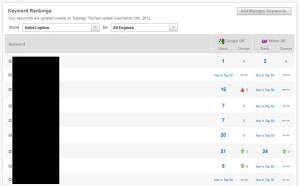
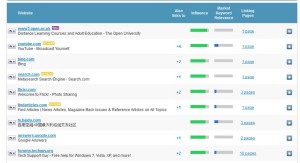
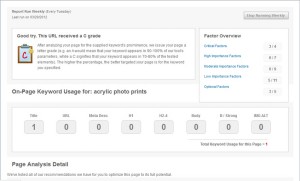
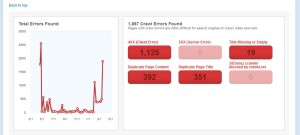
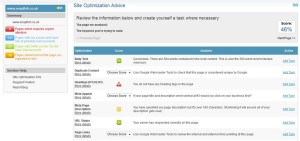
Leave a Reply